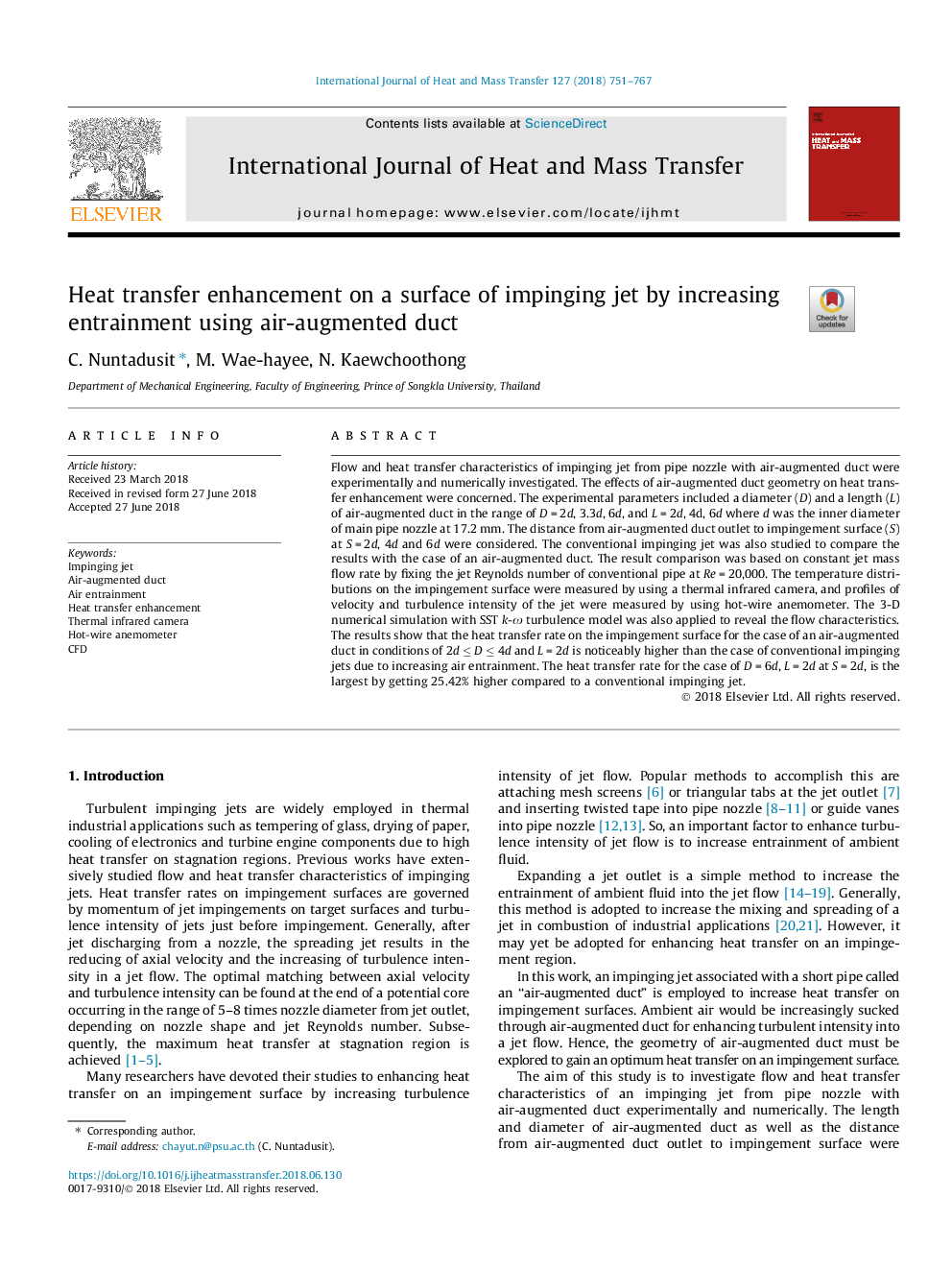| Article ID | Journal | Published Year | Pages | File Type |
|---|---|---|---|---|
| 7053818 | International Journal of Heat and Mass Transfer | 2018 | 17 Pages |
Abstract
Flow and heat transfer characteristics of impinging jet from pipe nozzle with air-augmented duct were experimentally and numerically investigated. The effects of air-augmented duct geometry on heat transfer enhancement were concerned. The experimental parameters included a diameter (D) and a length (L) of air-augmented duct in the range of Dâ¯=â¯2d, 3.3d, 6d, and Lâ¯=â¯2d, 4d, 6d where d was the inner diameter of main pipe nozzle at 17.2â¯mm. The distance from air-augmented duct outlet to impingement surface (S) at Sâ¯=â¯2d, 4d and 6d were considered. The conventional impinging jet was also studied to compare the results with the case of an air-augmented duct. The result comparison was based on constant jet mass flow rate by fixing the jet Reynolds number of conventional pipe at Reâ¯=â¯20,000. The temperature distributions on the impingement surface were measured by using a thermal infrared camera, and profiles of velocity and turbulence intensity of the jet were measured by using hot-wire anemometer. The 3-D numerical simulation with SST k-Ï turbulence model was also applied to reveal the flow characteristics. The results show that the heat transfer rate on the impingement surface for the case of an air-augmented duct in conditions of 2dâ¯â¤â¯Dâ¯â¤â¯4d and Lâ¯=â¯2d is noticeably higher than the case of conventional impinging jets due to increasing air entrainment. The heat transfer rate for the case of Dâ¯=â¯6d, Lâ¯=â¯2d at Sâ¯=â¯2d, is the largest by getting 25.42% higher compared to a conventional impinging jet.
Keywords
Related Topics
Physical Sciences and Engineering
Chemical Engineering
Fluid Flow and Transfer Processes
Authors
C. Nuntadusit, M. Wae-hayee, N. Kaewchoothong,
